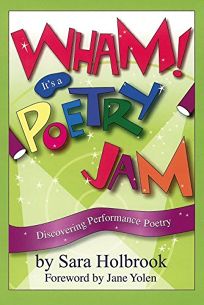 A few weeks ago, I received an unexpected message in my work email from a professor at Texas Woman's University. Dr. Mandy Stewart, a professor who I have not met, asked if she could share some of my work with potential graduate students. Fortunately, Dr. Stewart could not see me gushing and blushing behind my computer.
A few weeks ago, I received an unexpected message in my work email from a professor at Texas Woman's University. Dr. Mandy Stewart, a professor who I have not met, asked if she could share some of my work with potential graduate students. Fortunately, Dr. Stewart could not see me gushing and blushing behind my computer.As if that were not flattering enough, our conversation led to a book she recently wrote, Keep it R.E.A.L!: Relevant, engaging, and affirming literacy for adolescent English learners. Dr. Stewart asked me two questions: Would I mind if she sent me a copy to read? Would I mind providing my opinion on how the information can be more inclusive of middle school students?
Me? Seriously? Two words: Jaw. Drop. What kind of expert am I? Fourteen plus years of experience teaching middle school, six of those as a certified ESL teacher, and I still do not see myself as an expert. But I do have opinions all the time, so why not! So here goes...something.
Reader Response:
 Dr. Stewart shares how she used reader response instruction with newcomer students in a high school summer institute. Reader response might be the only theory I can comfortably discuss. I read Lois Tyson's book Critical theory today prior to entering the field of education. Even as I was studying this information as part of my English minor, reader response criticism resonated with me the most because it is how I read naturally. Once I entered the seventh grade classroom (and later on eighth), this became my go-to theory with my students.
Dr. Stewart shares how she used reader response instruction with newcomer students in a high school summer institute. Reader response might be the only theory I can comfortably discuss. I read Lois Tyson's book Critical theory today prior to entering the field of education. Even as I was studying this information as part of my English minor, reader response criticism resonated with me the most because it is how I read naturally. Once I entered the seventh grade classroom (and later on eighth), this became my go-to theory with my students.Reader response is all about interacting with the text to make meaning. It is about the experience of the reader. Not only do I consider this to be an ideal way for middle school students to develop a relationship with text, I also see this as beneficial for English language learners. Because we are asking our ELLs to engage with the text and develop connections, they cannot be wrong (unless they have completely misread, of course). The students are bringing their experiences to the table that allow them to engage in writing, listening, and speaking, in addition to the reading, all within the framework of a low affective filter.
The Acronym:
Just as we wish for students to connect with text, we need to connect with our students. Why not incorporate some slang into our teaching? I could easily say, "We are going to Keep it R.E.A.L. today," as part of a reading lesson. (That is far more comfortable for me than referring to myself as the G.O.A.T. or as Gucci.)
Newcomers will need instruction in understanding slang American language. Pre-teens and young teens are on a journey of self-discovery, and as much as we may want them to be focused on long-term educational goals, their goal is simply to fit in with and be accepted by their peers. So I am all for keepin' it real. We can teach our newer ELLs an expression that will help them communicate socially, while also making new-language text more accessible.
So here is my initial opinion regarding this content and students in grades 6-8: The foundation of this work is definitely an ideal fit for the middle school classroom. It allows for all students to connect to the learning, in particular our ELLs who may feel isolated and withdrawn. Reader response through Keep it R.E.A.L. provides for every student to be part of the learning community.
Dr. Stewart discusses each element of R.E.A.L. in chapter one, and I would rather you read it than have me share all of my reader responses to the questions she proposes in regard to relevancy, engagement, affirmation, and literacy instruction, as we each bring different backgrounds and experiences from our teaching to these topics.






























